From Friday 23 to Sunday 25 May 2025, the
Principality will play host to the 82nd edition of the most famous motor race
of them all: the Formula 1 TAG Heuer Grand Prix de Monaco.
Experience the thrill of elite motor sport, like nowhere else...
Lightning Leclerc…
Home-grown hero Charles Leclerc, who knows
every turn of the circuit like the back of his hand, won the 2024 Monaco Grand
Prix.
The stars aligned for the Monegasque
driver, with no early retirement and a perfect strategy. Starting from pole,
the man they call “Le Petit Prince” of the Scuderia Ferrari led from the first
lap to the chequered flag, finally claimed victory in his home race, and the
sixth race win of his Formula 1 career to date.
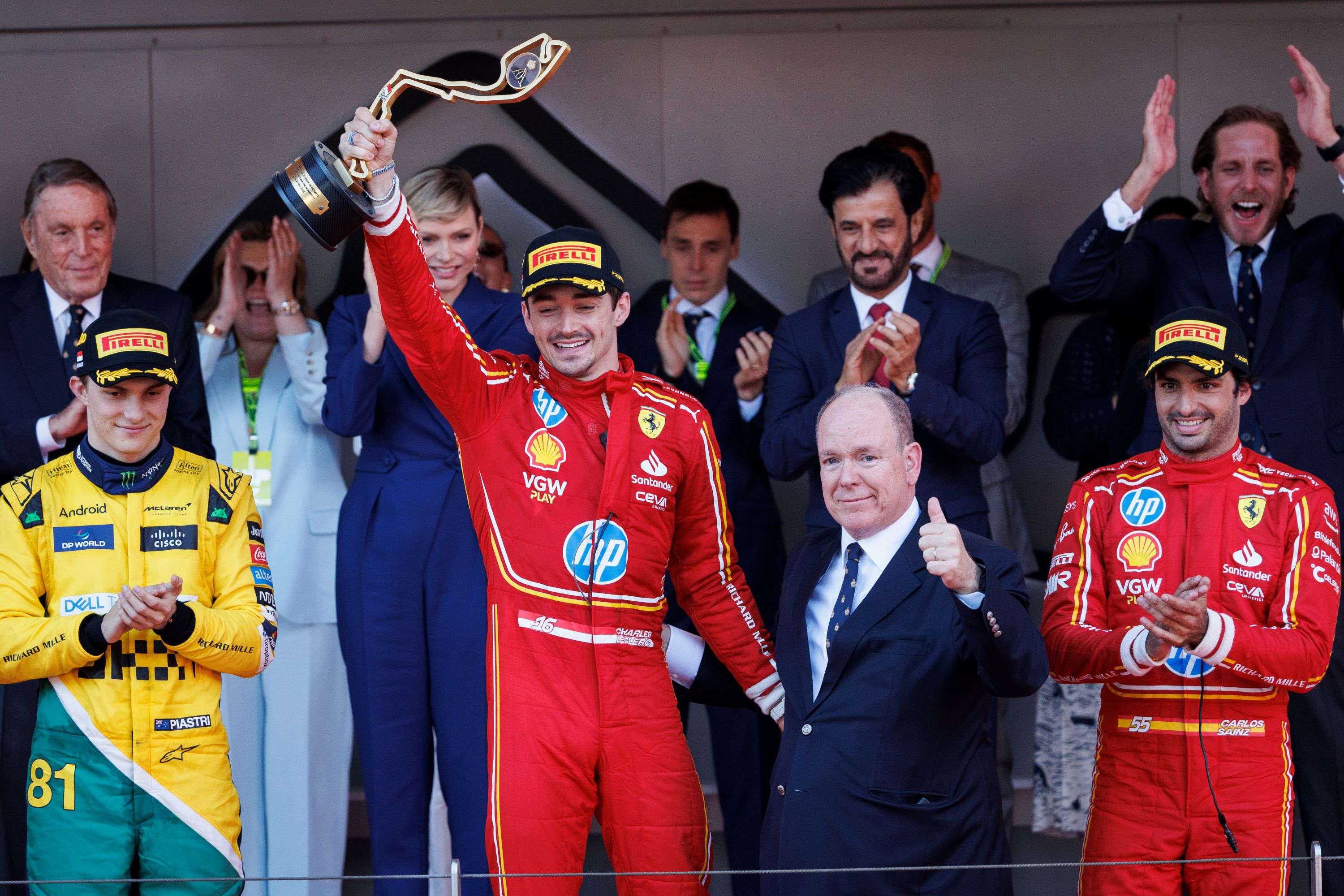
As a native of the Principality, he was determined to shine in his own backyard. Contracted to Ferrari since 2019, he is the third Monegasque driver to race in Formula 1, after Louis Chiron and Olivier Beretta.
International recognition…
In
his efforts to obtain official recognition for the Automobile Club de Monaco
from the Association Internationale des Automobile Clubs Reconnus, Antony
Noghès, son of the ACM's President, drew on all his powers of imagination to
create a street race in the Principality itself. The race satisfied the AIACR's requirement
for an event held within the limited confines of Monaco (which at the time
covered barely 1.5 km²).
With help from engineer Jacques Taffe and Louis Chiron, former personal driver
of Marshals Foch and Pétain...
He succeeded!
No
other country in the world would ever have a circuit quite like it!
ACM.jpg)
On 14 April 1929, Prince Pierre officially
opened the circuit of the 1st Monaco Grand Prix, doing a lap of honour in a
Torpedo Voisin driven by race director Charles Faroux.
That inaugural Grand Prix was won by
Englishman William Grover-Williams, nicknamed “W Williams”, driving a green
Bugatti 35 B, with a time of 3'56’11. He completed the 100 laps at an average
speed of 80.194 km/h.
From that point on, the Monaco Grand Prix took
off and went from strength to strength.
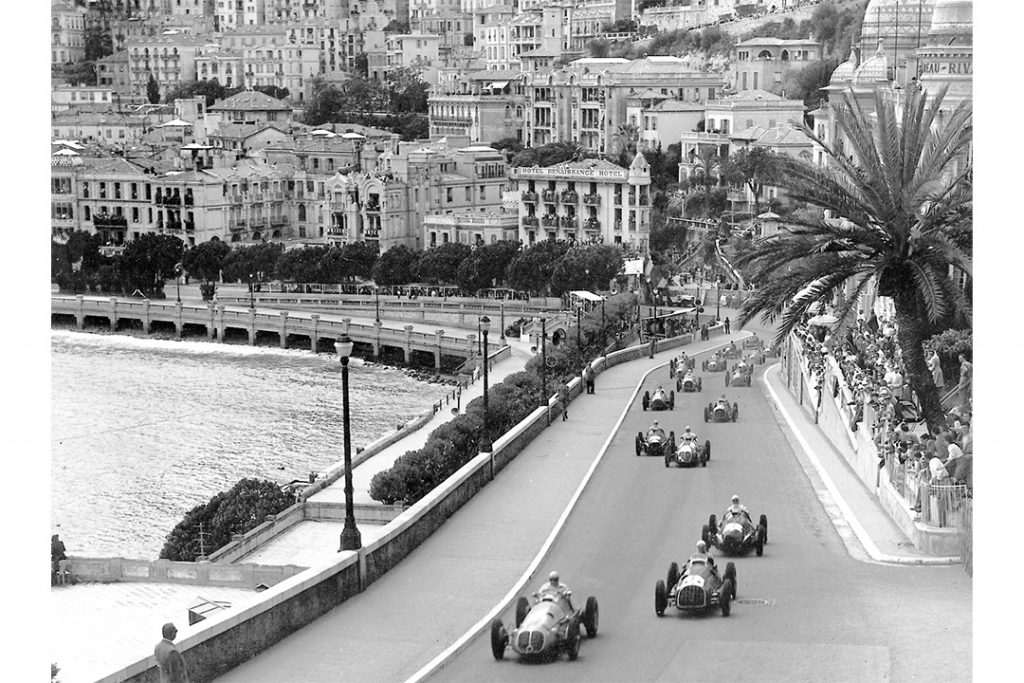
Formula
1 and the big names arrive in Monaco...
After
the ninth Grand Prix in 1937, World War Two interrupted the event for more than
ten years.
It was not until 16 May 1948 that the almost forgotten roar of the racing cars
was heard once again in the streets of the Principality.
Things were back on track, so to speak, and the Formula 1 World Championship
was created two years later, in 1950. On
21 May, an Argentine driver took the chequered flag in in the 11th Monaco Grand
Prix. That driver was none other than the great Juan-Manuel Fangio.
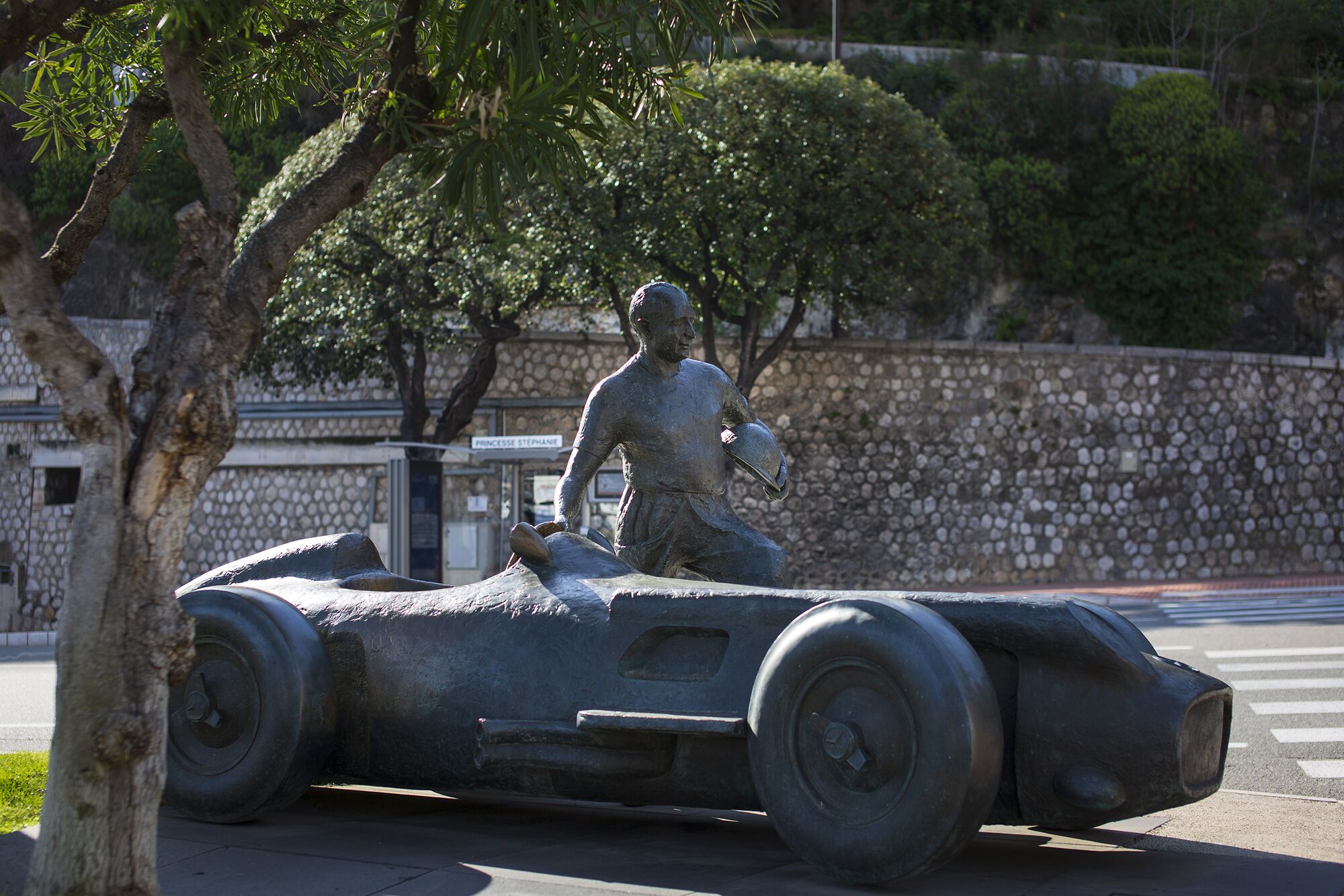
In
the 1960s and 70, Graham Hill, Jackie Stewart, and Niki Lauda all claimed glory
in the Principality, before making way for a legendary duel between Frenchman
and Brazilian in the 80s and 90s, as Alain Prost and Ayrton Senna locked horns. Senna still holds the record for most race
wins in Monaco, with six.
Michael Schumacher was also a winner of the Monaco Grand Prix. In fact, the "Red Baron" looked set
to establish uncontested supremacy in the Principality, but a series of errors
and technical issues limited the German legend to "just" five race
wins, between 1994 and 2001.
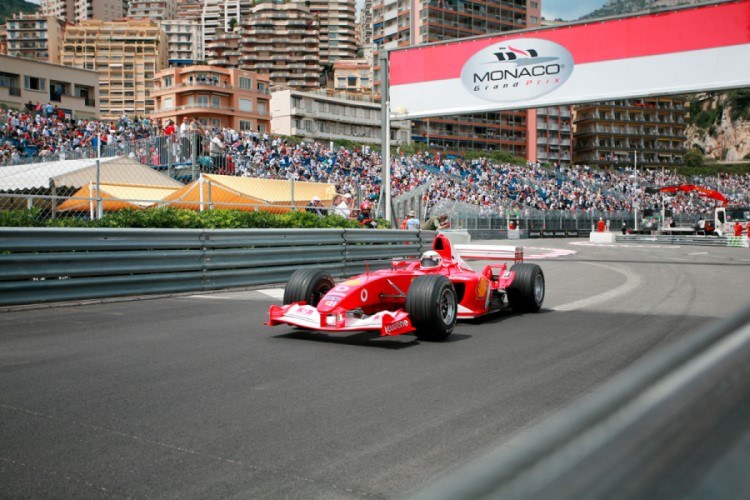
One
of the most challenging circuits...
“Driving
in Monaco is like riding a bicycle around your living room”
The
memorable remark by Nelson Piquet, World Champion in 1981, 1983 and 1987,
perfectly encapsulates the difficulty of this Grand Prix.
Over
the course of 78 laps of a 3.337 km circuit, featuring chicanes, a tunnel, and
19 tight corners between the protective barriers, the drivers need to be
inch-perfect from start to finish!
The Fairmont hairpin, situated at the halfway point, requires the drivers to
slow to 45 or 50 km/h, and is the slowest turn of the season.
It's a challenge that every driver wants to take on, but requires them to use
every ounce of their talent and demands surgical precision.
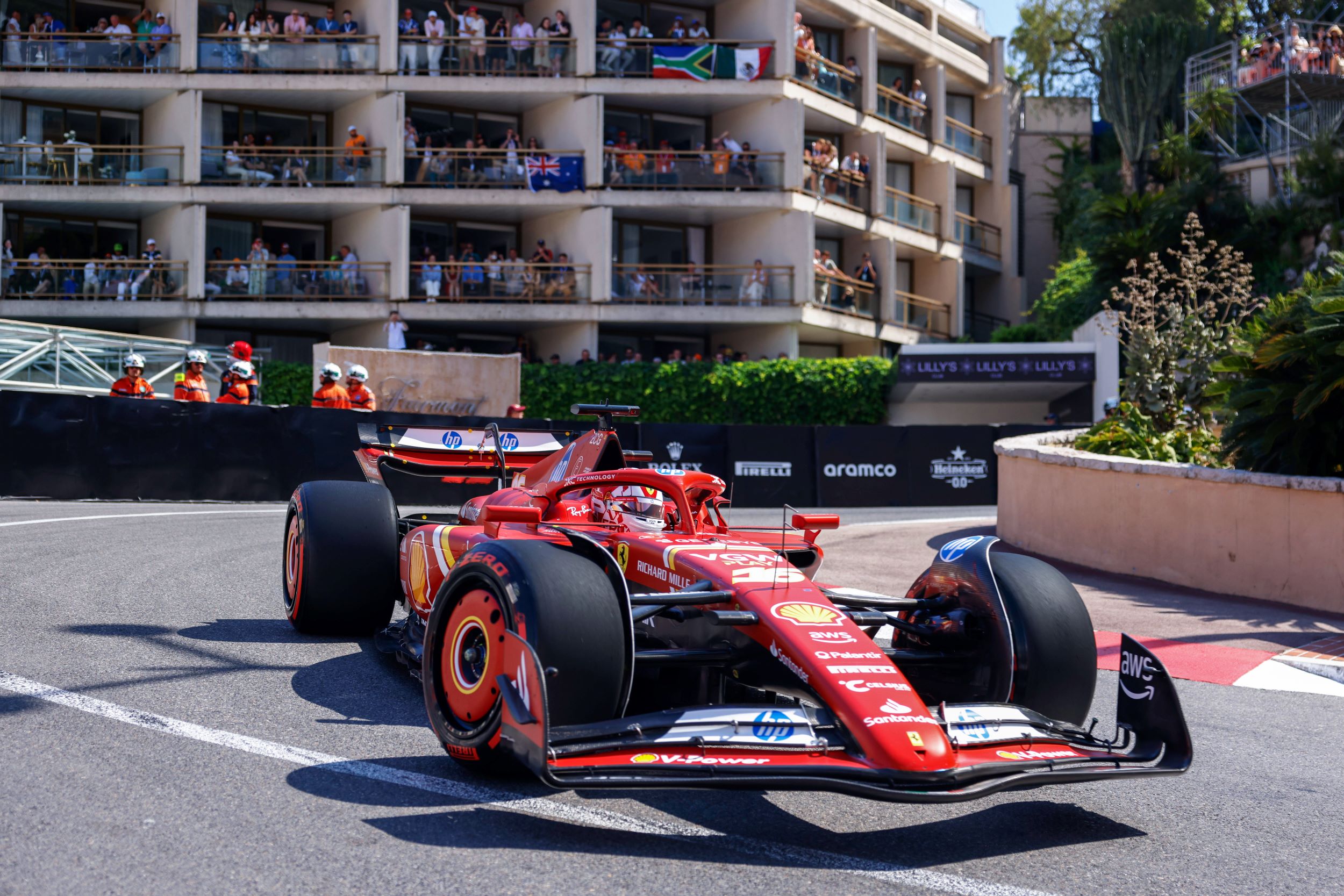
There
are no runoff areas between the track and the barriers, so cranes must be
installed in various locations to remove retired cars as quickly as
possible. The stewards of the Automobile
Club de Monaco are viewed as being among the best in the world, for their speed
and efficiency.
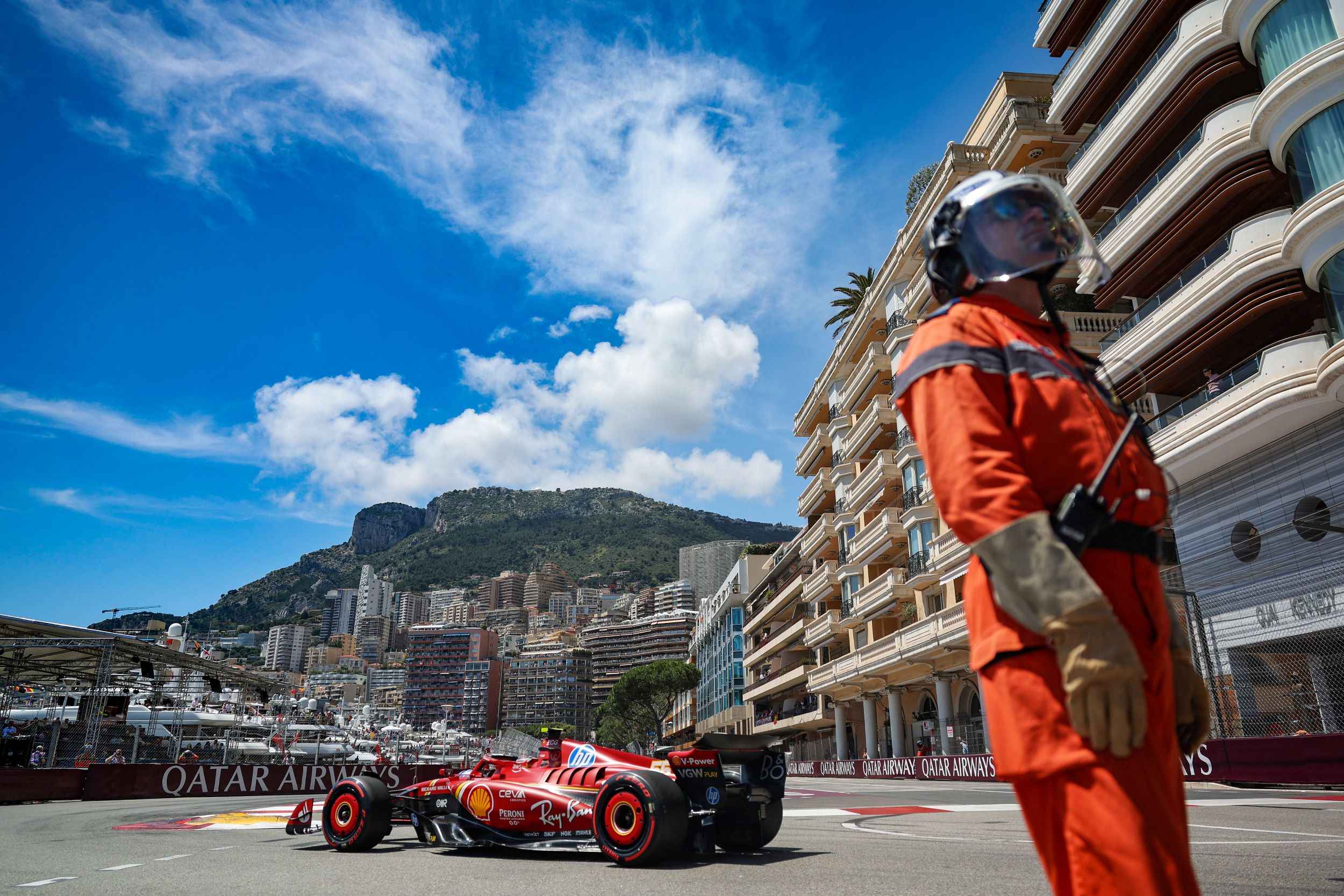
Formula
1 set to stay in the Principality
The Monaco Formula 1 Grand Prix will remain in the streets of the Principality until 2031 after the existing deal between the Automobile Club de Monaco (ACM) and the Formula One Group was renewed for a further six years.
I especially want to thank HSH Prince Albert II of Monaco, Stefano Domenicali, and everyone involved in extending this contract. This new deal with Formula One Group up to 2031 not only confirms our solid relationship, but also reaffirms our commitment to offering visitors an unrivalled, top class race weekend experience.
Michel Boeri / President
of the Automobile Club de Monaco
|
Formula%201.png)
1,800
parking spaces
Spectators arriving by car can enjoy easier
access to the circuit and special rates by using the "Parking des
Salines" car park at the western entrance to the Principality, opposite
the Exotic Garden.
From the car park, it's just a 15 minute
walk to the circuit via the Galerie des Salines. Simply follow the signposts.
Alternatively, use one of the free shuttle buses laid on by Monaco's bus
operator CAM. You will just need to show your car park ticket on boarding.
The buses will run every ten minutes from 8
am to 8 pm, between the Parking des Salines and Avenue Albert II in
Fontvieille. Spectators can then walk to the Place d'Armes and the F1 circuit
in minutes, or use the elevators.
Spectators with reduced mobility are encouraged
to use this solution if possible.
For
more details, visit the car park website: Parking des Salines
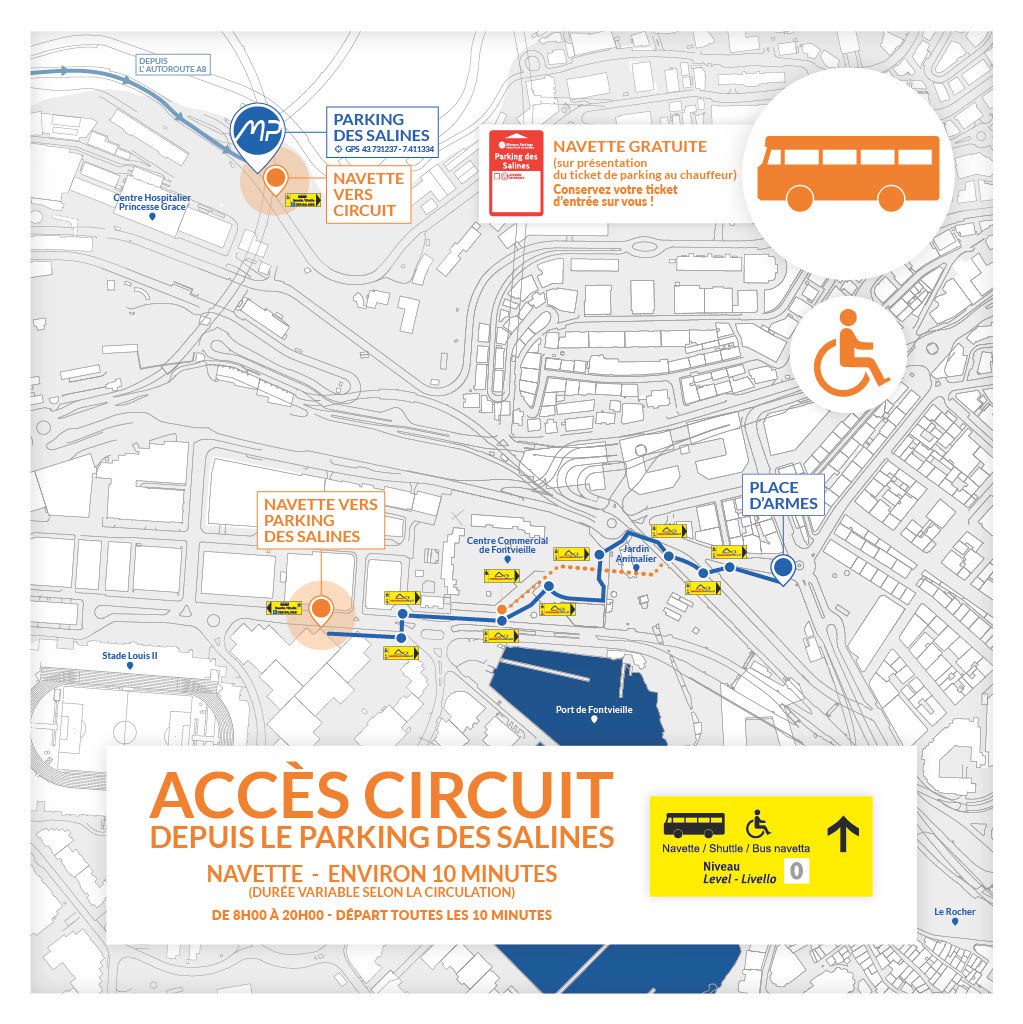
Who
will be the next Prince of Monaco's streets?
For more information, visit the official website of the Automobile Club de Monaco
Photo credits:
© ACM Olivier Caenen / Michael Alesi / Benjamin Vergély